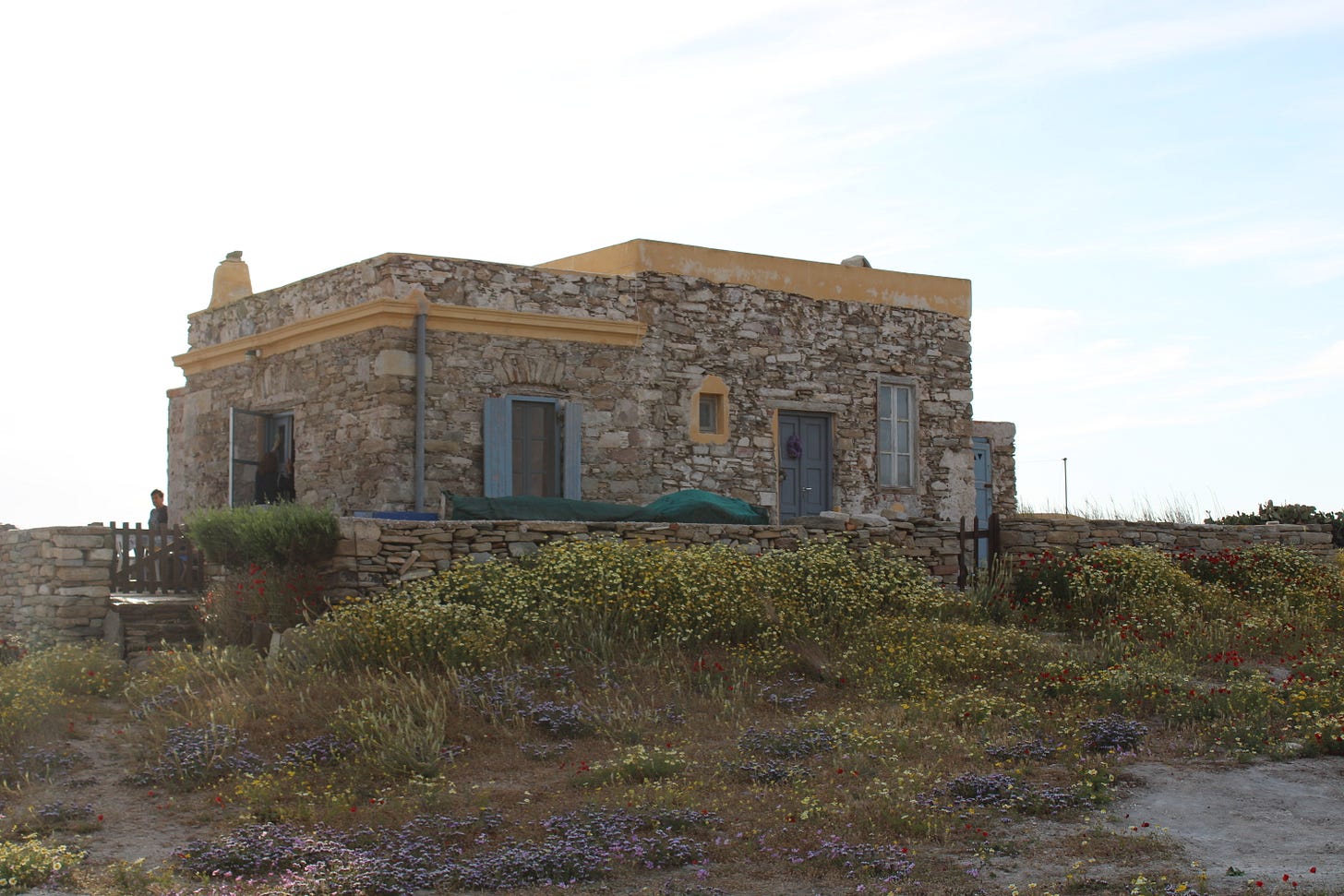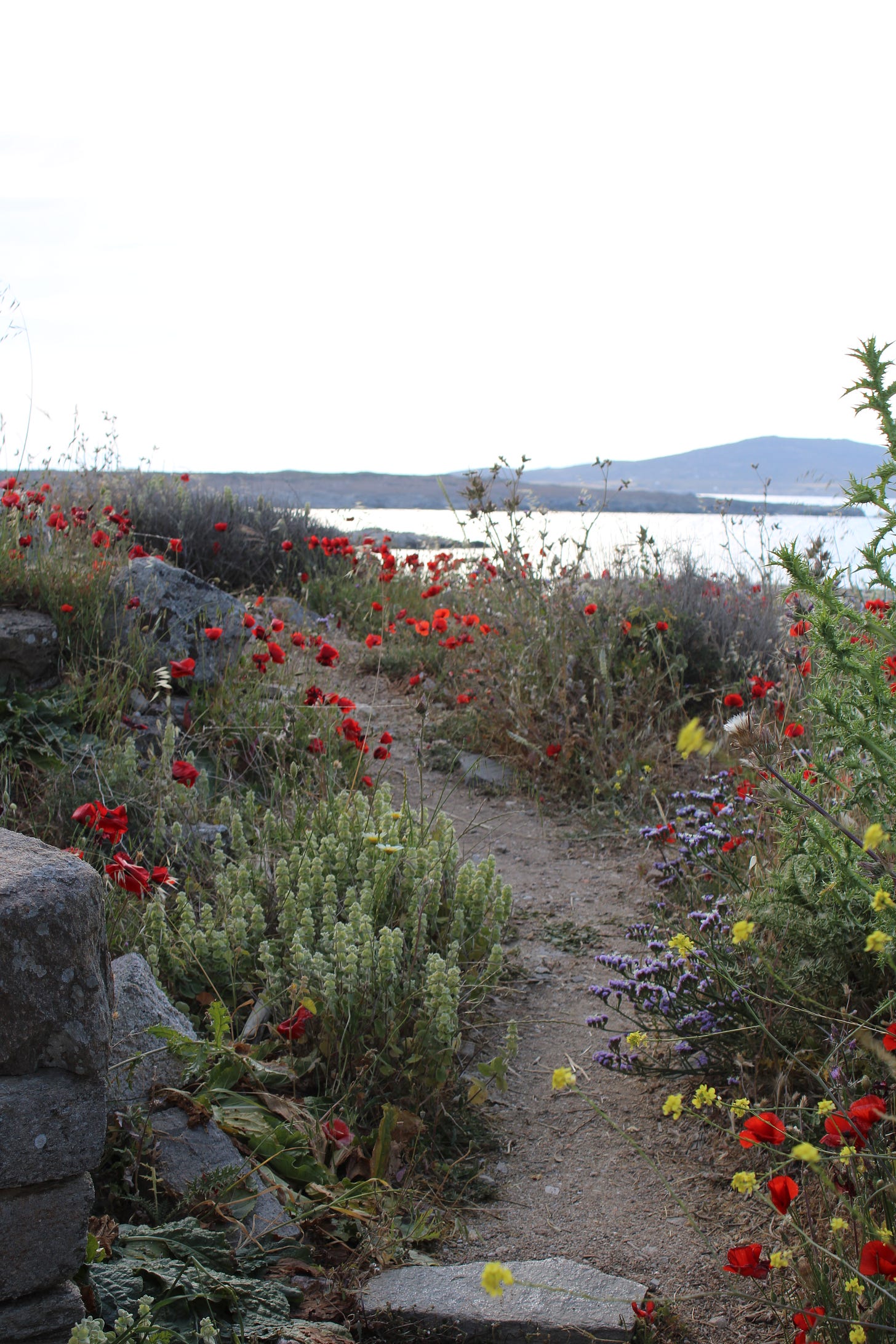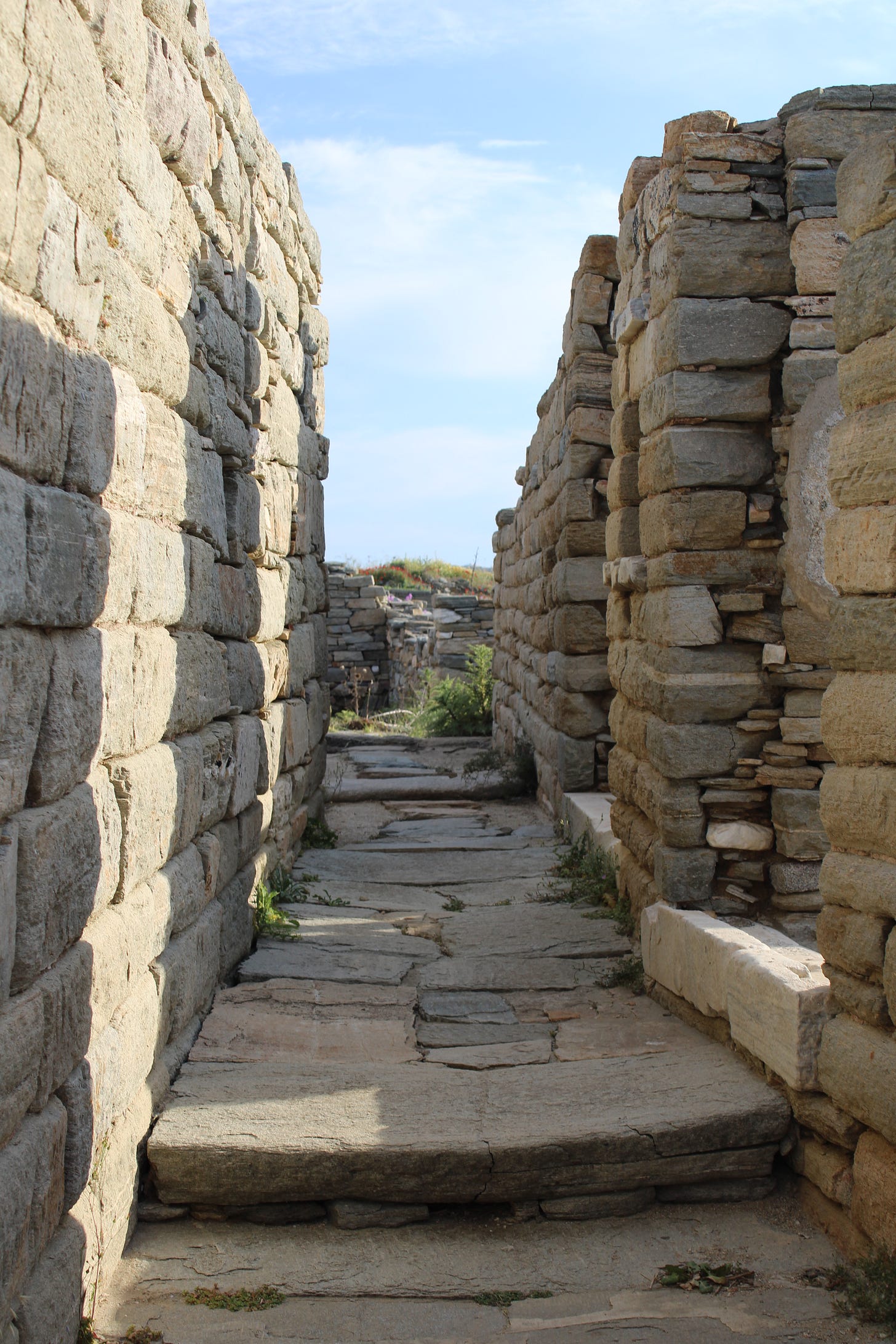Delos - Part I: Myth and magic
Wind-swept and stern is she set in the sea, and, wave-beaten as she is, is fitter haunt for gulls than course for horses. The sea, rolling greatly round her, casts off on her much spindrift of the Icarian water.
So wrote Callimachus, Greek Poet, Scholar and Librarian at Alexandria (c. 305 BCE - c. 240 BCE), in his Hymn IV to Delos in the 3rd century before Christ.
The Island of Delos is in the Aegean Sea, just a 30 minute boat ride from the island of Mykonos. It is in the centre of the Cyclades chain of islands, believed to circle Delos because of its sanctity as the birth place and home of Apollo and his twin sister Artemis.
And it is magic.
If you visit Delos today, you’ll find it deserted except for the archaeologists from The French School of Archaeology in Athens (who have been excavating there since 1873) and the caretakers who maintain their living quarters and the storage building (a modest museum, closed since the onset of the pandemic and undergoing repairs)…
You’ll also find cats.
Lots of cats.
But seriously, the island of Delos is probably the most magical place you will ever visit...
During our prescribed 90 minute tour on the island (I’m sure our group leader thought one and a half hours was plenty for most tourists, but in truth, I would have stayed overnight if I could), I was in constant awe; so much so that I realized I was holding my breath as I drank everything in and the hairs on my arms stood straight up, catching the breeze and making me shiver in excitement - all the while regularly losing sight of my group as I was in reverie (and taking pictures)…
But first, let’s go back to the beginning.
The ancients believed (as was chronicled by Callimachus) that the Aegean islands were fashioned by Poseidon, who -
According to Greek myth, the island of Delos was originally known as Asteria, called after the goddess of the same name who fled the forever amorous (read: lecherous) Zeus’ advances. According to some stories, Zeus transformed himself into an eagle and in an effort to evade him, Asteria took the form of a quail (yeah, I thought that was a bad choice too), threw herself down from Mount Olympus into the Aegean Sea (quails can’t swim), becoming a drifting island, some say hidden just below the surface of the waves. Because she was a goddess, she could do that without drowning. Me, not so much.
When another goddess Leto became pregnant by Zeus (there are differing opinions as to her say in the matter: she was his first wife, his concubine, his mistress or, his trophy and unwilling partner), his wife Hera (and sister - the Olympian gods were sketchy that way) became enraged and chased Leto from place to place, threatening all who might give her safety, so that she struggled to find a safe harbour in which to give birth. It was her sister, Asteria, in the form of Delos, who provided her with a place on which to have her two children, Apollo and Artemis - after she bobbed up from the sea.
As a thank you for providing safe haven, Leto promised Delos that those coming to worship her son Apollo would ensure the barren island’s future riches:
Delos, if you would be willing to be the abode of my dear son
Phoibos Apollo, and here to establish for him a great sumptuous temple—
since no other will touch you; of that you will not be unmindful,
nor, I believe, will you be at all wealthy in cattle and sheep flocks,
nor will you bring forth grapes or produce an abundance of produce—
if you contain, however, the shrine of far-shooting Apollo,
people will all be bringing to you their hecatombs* hither,
when they gather together; the measureless savor of fat will
always rise from the fires—your inhabitants you will be feeding
out of those foreigners’ hands, for in truth your soil is not fertile.
from the Homeric Hymn to Apollo.
*hecatomb: a great public sacrifice, usually comprised of 100 oxen
It is believed that the original inhabitants of Delos were pirates from what is now Turkey; they were a people called the Carians, who inhabited southwest Anatolia in the 3rd millenium BCE (I will be using this form rather than the older ‘B.C.’ - if you’re curious why, read this). They claimed Delos as their own until they were expelled by King Minos (yes, that King Minos from Knossos in Crete, only 345 kilometers to its south) whose navy reigned supreme over the Aegean Sea three generations before the Trojan War.
You may have guessed that it is hard to know where myth and history meet in the island of Delos. You would be forgiven if you thought that this tiny island, measuring only 5 kilometers long and 1.3 kilometers wide, was of lesser importance amongst bigger islands and land masses in the Aegean Sea and Asia Minor. But the truth is that despite its geographical size, at its peak Delos had thousands of inhabitants and represented a cosmopolitan trading centre with a thriving port and active social, religious and entertainment scene for about a thousand years from the 8th century BCE.
And now, millenium later, Delos seems quiet. Except for the ghosts of those who once lived here, the exhumed bodies taken away from graves (that’s a story for Part II) and those who were driven out or slaughtered during the Mithridatic Wars (c. 88 BCE) and then attacked by Cilician pirates (c. 69 BCE).
Delos is once again sacred and protected. Come back for more in Part II.










